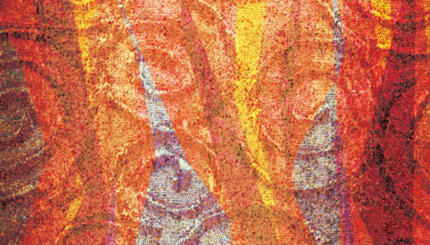Commentary on Parashat Nitzavim, Deuteronomy 29:9-30:20
I consider the most beautiful passage in the Torah to be found in Parashat Nitzavim (Deut. 30:11-14):
Surely, this mitzvah that I enjoin upon you this day is not too baffling for you, nor is it beyond reach. It is not in the heavens, that you should say, ‘Who among us can go up to the heavens and get it for us and impart it to us, that we may observe it?’ Neither is it beyond the sea… No, the thing is very close to you, in your mouth and in your heart, to observe it.
One reason I love this passage is because it utterly fails to define “this mitzvah,” leaving each of us to attach our own personal meaning. I understand “this mitzvah” as an amalgam of the interpretations of the medieval commentators Nahmanides and Seforno.
This Mitzvah
Nahmanides says that the phrase refers to the entire Torah, and Seforno explains it as teshuvah — repentance and return. By pairing Torah, which at its essence demands that we pursue justice, and teshuvah, our capacity to right wrongs, we can understand this passage as a mandate to believe that we have an innate capacity to fight the status quo when it is unjust and create change in the world around us.
By telling us that “this mitzvah” resides within us–in our mouths and in our hearts–this passage acknowledges and strongly rejects the human tendency toward defeatism: to convince ourselves that change, hope, and progress are beyond our grasp.
With your help, My Jewish Learning can provide endless opportunities for learning, connection and discovery.
We may sometimes wish that we could be passive receptacles for the difficult, transformative mitzvot that help us enact change in the world around us, that someone else could do this hard work for us, but this passage vehemently rejects that notion. Rather, it insists that the capacity to effect change resides within us.
Yet the passage neglects to tell us how we each can come to actualize and act on this capacity. I believe that the answer lies in the next parashah, Vayelekh (Deut. 31:10-12):
“Every seventh year…you shall read this Torah aloud in the presence of all Israel. Gather the people–men, women, children and the strangers in your communities–that they may hear and so learn…to observe faithfully every word of this Torah.”
Education for All
This practice, called hakhel, is an all-inclusive, free, public education, granted to women, men, and children, both community members and strangers. According to medieval commentators Abraham Ibn Ezra and Hizkuni, hakhel takes place at the beginning of the shmita, or sabbatical year, when agricultural work is forbidden. This enables the full year, when the entire community is free from physical labor, to be devoted to study. This model of universal access to education is the Torah’s built-in system to activate our capacity to change and improve the world.
Although imperfect due to its extreme infrequency–one year out of every seven does not provide for a very thorough education — hakhel’s messages of universal access and the need for sufficient time away from work in order to study are relevant today.
This is especially true in the contemporary Global South, where the necessity of earning a livelihood often imposes a formidable barrier to education. Children mired in poverty — especially girls — often must perform a great deal of domestic labor, leaving them no time for schooling. The United Nations notes the strong association between child labor and lack of access to education.
Inversely, expanding primary school enrollment has proved to be one of the most effective ways to relieve persistent poverty. Universal education is one of the eight Millennium Development Goals articulated by the United Nations and adopted by major world leaders with the goal of reducing poverty worldwide.
The goal is to “[e]nsure that, by 2015, children everywhere, boys and girls alike, will be able to complete a full course of primary schooling.” Recognizing this, many grassroots NGOs focus on providing families with the means to generate sufficient income so that children do not need to work–creating a shmita-like pause in labor that creates time for learning.
We who accept the message of Parashat Nitzavim — that the Torah’s mandate for change resides in all of our hearts and minds, just waiting to be activated through education–must extend to all of humankind the opportunities that have allowed us this outlook. We must ensure that hakhel and shmita exist for all of the children of the world, so that they can access the knowledge that will free them from the cycle of persistent poverty. Only then will progress, change, and hope truly reside not in the heavens or across the sea, but in the mouths and hearts of all of us.
Provided by American Jewish World Service, pursuing global justice through grassroots change.
Torah
Pronunced: TORE-uh, Origin: Hebrew, the Five Books of Moses.
teshuvah
Pronounced: tuh-SHOO-vah, (oo as in boot) Origin: Hebrew, literally “return”, referring to the “return to God” teshuvah is often translated as “repentance.” It is one of the most significant themes and spiritual components of the High Holidays.



